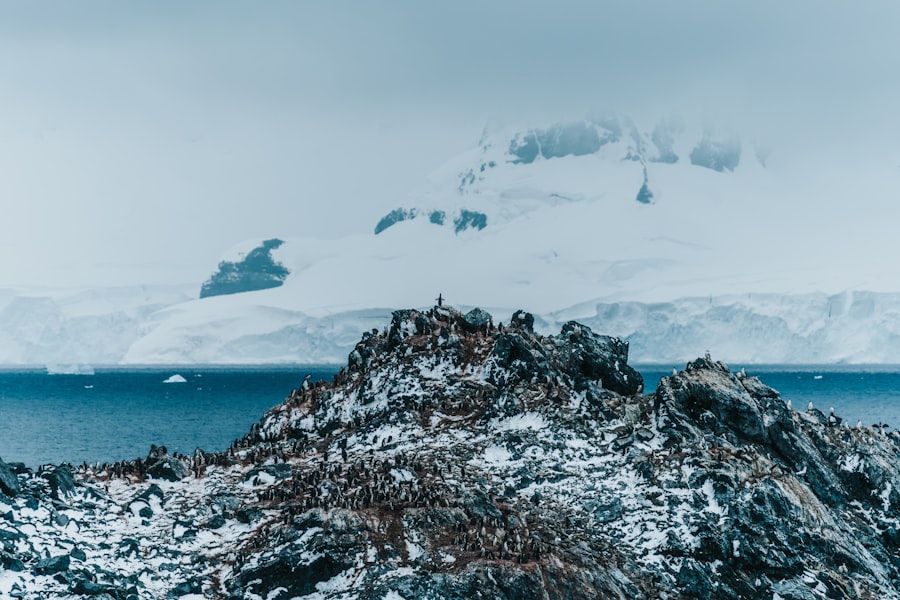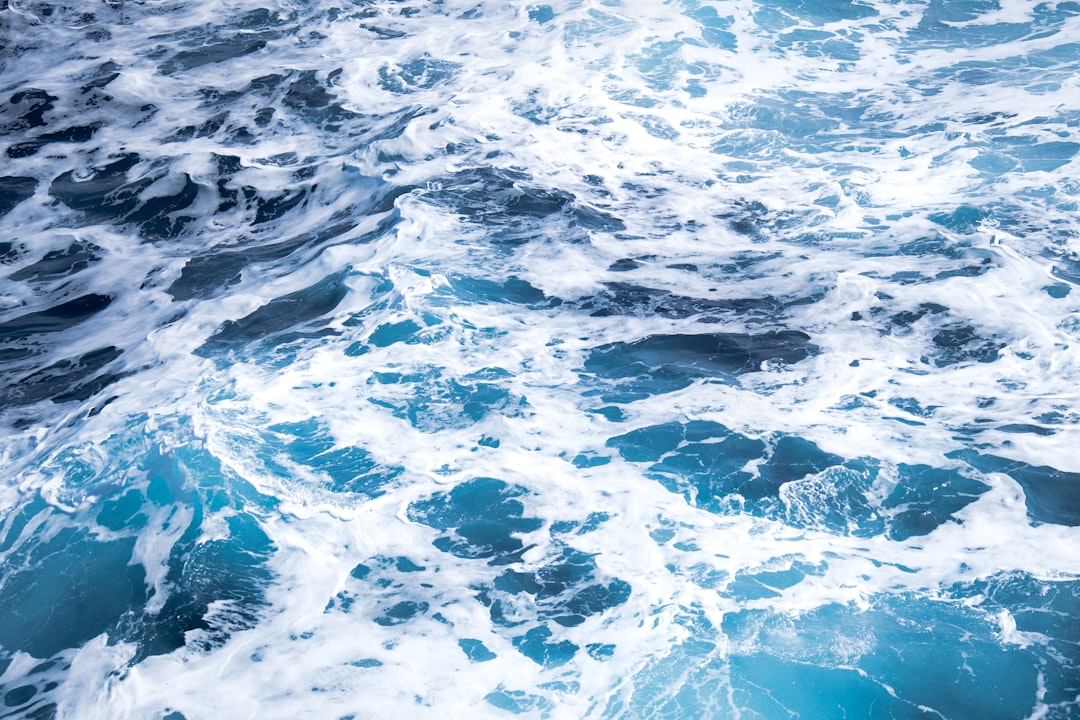The Drake Passage, a body of water that separates South America from Antarctica, is renowned for its tumultuous seas and unpredictable weather. Named after the English explorer Sir Francis Drake, who navigated these waters in the late 16th century, the passage has become a focal point for adventurers, researchers, and mariners alike. It serves as a critical route for vessels traveling between the Atlantic and Pacific Oceans, making it an essential corridor for maritime trade and exploration.
The Drake Passage is not merely a geographical feature; it embodies the spirit of adventure and the challenges of nature that have captivated explorers for centuries. As one of the most notorious maritime routes in the world, the Drake Passage is often described as a rite of passage for sailors. Its reputation for rough seas and strong currents has led to a mix of awe and trepidation among those who dare to traverse it.
The passage is a testament to the power of nature, where the confluence of the Atlantic and Pacific Oceans creates a unique environment that is both beautiful and perilous. For many, crossing the Drake Passage is not just about reaching a destination; it is an experience that tests one’s resolve and respect for the ocean’s might.
Key Takeaways
- The Drake Passage is a treacherous body of water located between South America’s Cape Horn and the South Shetland Islands of Antarctica.
- The geography and climate of the Drake Passage are characterized by strong winds, rough seas, and unpredictable weather patterns, making it one of the most challenging maritime routes in the world.
- The historical significance of the Drake Passage is marked by the exploits of early explorers and the strategic importance of the route for scientific research and exploration of Antarctica.
- Navigating the Drake Passage poses numerous challenges and dangers, including extreme weather conditions, icebergs, and strong currents, requiring careful planning and experienced seamanship.
- Safety precautions and navigation techniques for crossing the Drake Passage include using modern technology, following established routes, and heeding weather forecasts to minimize risks and ensure a safe journey.
Understanding the Geography and Climate of the Drake Passage
Geographically, the Drake Passage spans approximately 600 kilometers (370 miles) at its narrowest point, connecting Cape Horn in South America to the Antarctic Peninsula. This relatively narrow stretch of water plays a significant role in global ocean currents, particularly the Antarctic Circumpolar Current, which flows uninterrupted around Antarctica. The passage’s depth varies considerably, with some areas plunging to over 4,000 meters (13,123 feet), creating an underwater landscape that is as diverse as it is dramatic.
The climate of the Drake Passage is characterized by its extreme variability. Weather conditions can change rapidly, with calm seas transforming into violent storms within hours. The region experiences strong winds, often exceeding 50 knots, and heavy precipitation, making navigation particularly challenging.
The cold waters of the Southern Ocean contribute to the passage’s notorious reputation, as they can create large swells and unpredictable waves. Mariners must be prepared for these conditions, as they can significantly impact both safety and comfort during a crossing.
Historical Significance of the Drake Passage

The historical significance of the Drake Passage cannot be overstated. It has been a vital route for explorers since the Age of Discovery, serving as a gateway to Antarctica and beyond. Sir Francis Drake’s expedition in 1578 marked one of the first recorded crossings of this treacherous waterway, paving the way for future explorers and navigators.
His journey not only expanded European knowledge of the southern seas but also highlighted the potential for trade routes that would connect distant lands.
In the 19th century, whalers and sealers ventured into these waters, drawn by the abundance of marine life.
The passage became a focal point for scientific research in the 20th century as researchers sought to understand its unique ecosystems and climatic conditions. Today, it remains an important area for marine biology studies and climate research, as scientists continue to investigate its role in global oceanic systems.
Challenges and Dangers of Navigating the Drake Passage
| Challenges and Dangers | Drake Passage |
|---|---|
| Strong Winds | Up to 70 mph |
| Rough Seas | High waves and swells |
| Icebergs | Potential collision hazard |
| Narrow Passage | Between South America and Antarctica |
| Isolation | Limited access to help |
Navigating the Drake Passage presents numerous challenges that can test even the most experienced mariners. The combination of strong currents, unpredictable weather patterns, and large swells creates a formidable environment for vessels attempting to cross. The infamous “Drake Shake,” characterized by rough seas and turbulent waters, can lead to significant discomfort for passengers and crew alike.
Many sailors have recounted harrowing tales of battling against towering waves and fierce winds that seem to come from every direction. In addition to natural challenges, navigational hazards also pose risks in the Drake Passage. Icebergs and growlers—small ice chunks that can be difficult to detect—are common in these waters, especially during certain times of the year.
Collisions with these ice formations can be catastrophic for vessels, making vigilance essential during crossings. Furthermore, the remoteness of the passage means that assistance may be far away in case of emergencies, adding an extra layer of risk for those who venture into these waters.
Safety Precautions and Navigation Techniques for Crossing the Drake Passage
Given the inherent dangers associated with crossing the Drake Passage, mariners must adopt rigorous safety precautions and navigation techniques. Proper vessel preparation is crucial; this includes ensuring that all equipment is in good working order and that safety gear is readily accessible. Life jackets, flares, and emergency beacons should be standard on every vessel traversing these waters.
Additionally, crew members should be well-trained in emergency procedures to respond effectively should any situation arise. Navigation techniques also play a vital role in ensuring safe passage through the Drake Passage. Modern technology has greatly enhanced navigational capabilities; GPS systems and advanced radar can help mariners track their position and avoid hazards.
However, reliance on technology should not replace traditional seamanship skills. Experienced sailors often emphasize the importance of understanding weather patterns and ocean currents, as well as maintaining a keen awareness of one’s surroundings at all times. By combining modern tools with time-honored skills, mariners can navigate this challenging passage with greater confidence.
Wildlife and Natural Wonders of the Drake Passage

Despite its reputation for danger, the Drake Passage is also home to an astonishing array of wildlife and natural wonders. The nutrient-rich waters support diverse marine life, making it a prime location for observing various species of whales, seals, and seabirds. Humpback whales, orcas, and minke whales are frequently spotted during crossings, delighting passengers with their acrobatics and playful behavior.
The presence of these magnificent creatures adds an element of wonder to what can otherwise be a daunting journey. In addition to marine mammals, seabirds such as albatrosses and petrels are commonly seen soaring above the waves. These birds are well-adapted to life in harsh marine environments and often follow vessels for miles in search of food scraps.
The breathtaking scenery surrounding the Drake Passage further enhances its allure; towering icebergs and dramatic cliffs create a stunning backdrop that captivates all who traverse these waters. For many adventurers, witnessing this unique ecosystem is one of the most rewarding aspects of their journey.
Popular Routes and Destinations in the Drake Passage
The Drake Passage serves as a gateway to some of the most remote and pristine destinations on Earth. One of the most popular routes is from Ushuaia, Argentina—the southernmost city in the world—to various points along the Antarctic Peninsula. This journey typically takes two days to complete and offers travelers breathtaking views of glaciers, icebergs, and wildlife along the way.
Many expedition cruises take this route, providing passengers with opportunities for landings on Antarctic shores where they can explore research stations or observe penguin colonies. Another notable destination within the Drake Passage is Deception Island, an active volcanic caldera that offers unique geological features and historical significance. Visitors can explore remnants of whaling stations while enjoying stunning landscapes shaped by volcanic activity.
Additionally, many voyages include stops at other islands such as Half Moon Island or King George Island, each offering distinct experiences that showcase the beauty and diversity of Antarctica’s environment.
Tips for Planning a Safe and Enjoyable Journey through the Drake Passage
Planning a journey through the Drake Passage requires careful consideration to ensure both safety and enjoyment. First and foremost, travelers should choose reputable operators with experience navigating these waters. Researching reviews and testimonials can provide valuable insights into an operator’s safety record and overall quality of service.
Additionally, travelers should pay attention to vessel size; smaller ships may offer more intimate experiences but can also be more susceptible to rough seas. Packing appropriately is another crucial aspect of preparation. Given the unpredictable weather conditions in the Drake Passage, layering clothing is advisable to accommodate temperature fluctuations throughout the day.
Waterproof gear is essential for staying dry during excursions or when encountering spray from waves. Furthermore, travelers should consider bringing seasickness remedies or medications to mitigate discomfort during potentially turbulent crossings.
Testimonials and Experiences from Seasoned Mariners and Adventurers
Seasoned mariners and adventurers often share their experiences crossing the Drake Passage with a mix of reverence and excitement. Many recount tales of navigating through fierce storms where waves towered above their vessels like mountains. These stories highlight not only the challenges faced but also the camaraderie that develops among crew members during such trials.
For some sailors, crossing the Drake Passage becomes a defining moment in their maritime careers—a testament to their skills and resilience. Adventurers who have traveled through this passage often describe it as transformative. The sheer beauty of Antarctica’s landscapes combined with encounters with wildlife creates lasting memories that resonate long after their journeys end.
Many express gratitude for having had the opportunity to witness such untouched wilderness firsthand while acknowledging their responsibility to protect these fragile ecosystems for future generations.
The Future of Navigating the Drake Passage: Environmental Concerns and Conservation Efforts
As interest in exploring Antarctica grows, so too do concerns about environmental impacts associated with increased maritime traffic through the Drake Passage. The delicate ecosystems found in these waters are vulnerable to disturbances caused by human activity—ranging from pollution to potential oil spills. Conservation efforts are underway to address these issues; organizations are advocating for stricter regulations on shipping practices while promoting sustainable tourism initiatives.
Additionally, research into climate change’s effects on polar regions highlights urgent needs for conservation measures within this unique environment. Scientists are studying how rising temperatures may alter marine ecosystems or affect wildlife populations in order to inform policy decisions aimed at protecting these fragile habitats. As awareness increases regarding environmental challenges facing our planet’s oceans, it becomes imperative that all who navigate through the Drake Passage do so with respect for its natural wonders.
Navigating the Drake Passage with Confidence and Respect
Navigating the Drake Passage is an experience that embodies both challenge and beauty—a journey that tests one’s mettle while offering glimpses into some of Earth’s most awe-inspiring landscapes. With proper preparation, knowledge about safety precautions, and an understanding of environmental responsibilities, adventurers can approach this formidable waterway with confidence and respect.
Ultimately, crossing the Drake Passage is not merely about reaching Antarctica; it is about embracing adventure while fostering a deep appreciation for nature’s power and fragility. By prioritizing safety measures alongside conservation efforts, future generations will continue to explore this extraordinary passage—ensuring that its legacy endures for years to come.
Navigating the Drake Passage is often considered one of the most challenging maritime routes in the world due to its unpredictable weather and rough seas. This treacherous stretch of water, located between the southern tip of South America and Antarctica, tests the mettle of even the most experienced sailors. For those interested in learning more about the challenges and experiences of crossing the Drake Passage, a related article can be found on MyGeoQuest. This article delves into the intricacies of this formidable journey and offers insights into what makes it such a daunting endeavor. You can read more about it by visiting this page.
WATCH NOW! Drake Passage: Earth’s Deadliest Waters Revealed
FAQs
What is the Drake Passage?
The Drake Passage is the body of water between the southern tip of South America and the northern tip of the Antarctic Peninsula. It connects the Atlantic and Pacific Oceans.
Why is the Drake Passage considered difficult?
The Drake Passage is known for its rough seas and unpredictable weather conditions. It is notorious for strong winds, large waves, and potential storms, making it a challenging and potentially dangerous crossing for ships.
How long does it take to cross the Drake Passage?
The crossing of the Drake Passage can take anywhere from 2 to 4 days, depending on the weather and sea conditions.
What are the potential dangers of crossing the Drake Passage?
The main dangers of crossing the Drake Passage include rough seas, strong winds, and the potential for storms. These conditions can lead to seasickness, ship instability, and the risk of accidents or damage to the vessel.
Are there any alternatives to crossing the Drake Passage?
There are alternative routes to reach Antarctica, such as flying to the continent or taking a longer, more northerly sea route. However, these options may not be feasible for all travelers and may not provide the same experience as crossing the Drake Passage.
